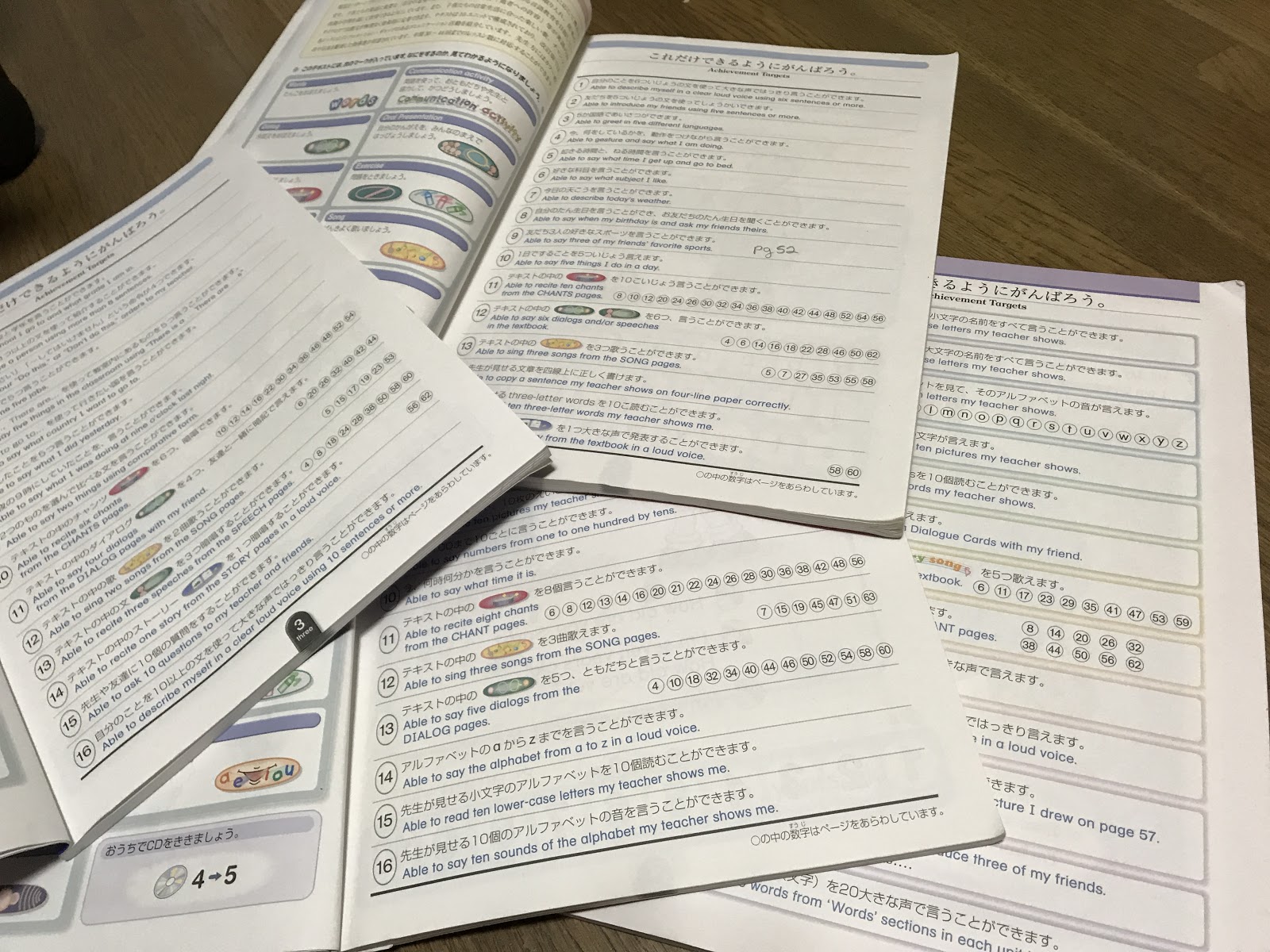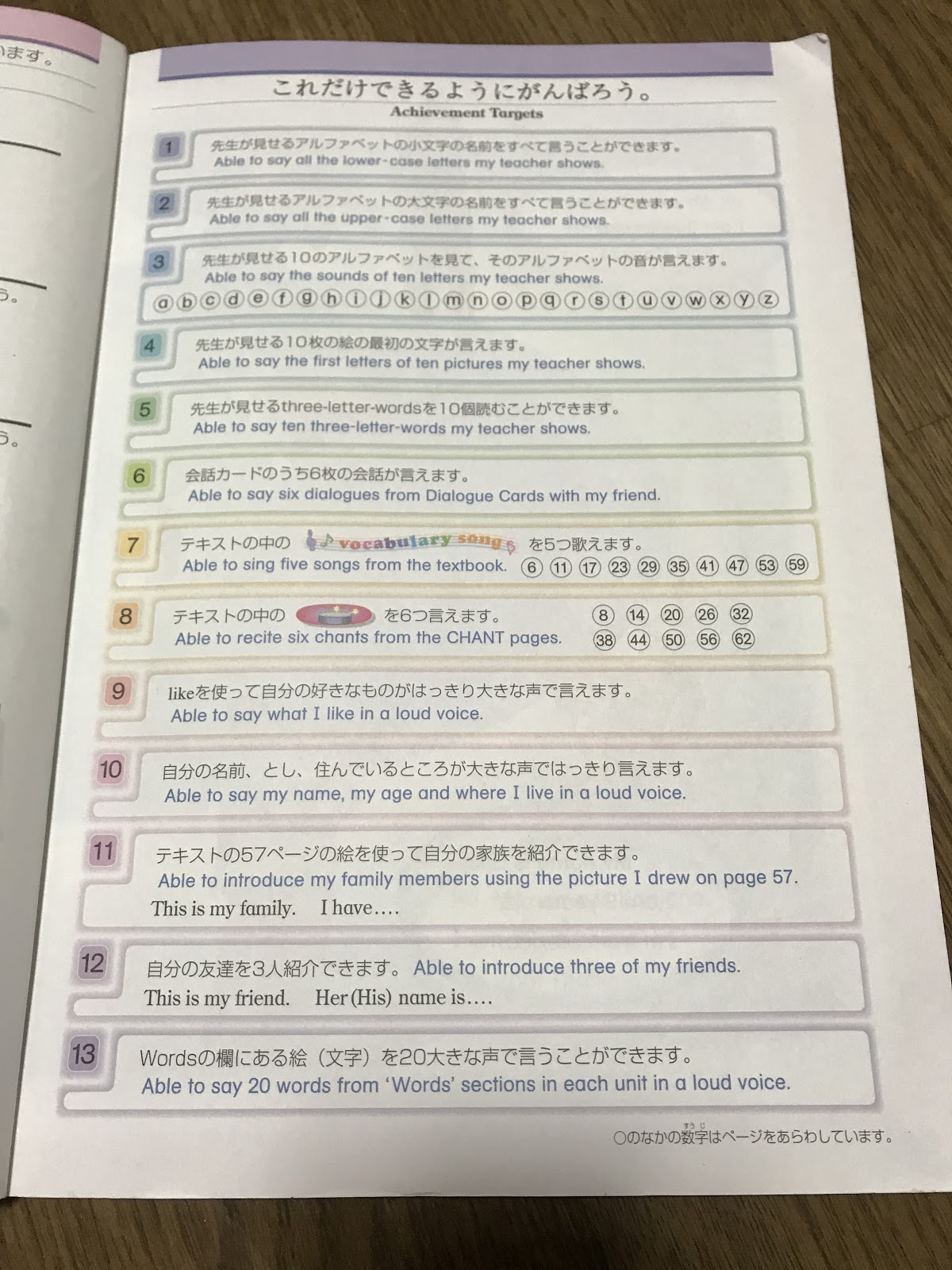

- 54. 10 Useful Pieces of Advice for Teaching with LEARNING WORLD #9 & 10
- 55. ‚ÄúHappy New Year!‚ÄĚ ‚ÄúI don‚Äôt say that.‚ÄĚ
- 53.„ÄÄHalloween 2019
- 52.„ÄÄREADY Workbook Pg. 17
- 51.„ÄÄEnglish-Uplift 1-Day Seminars
- 50.„ÄÄREADY Workbook - vocabulary copying activity
- 49.„ÄÄ10 Useful Pieces of Advice for Teaching with LEARNING WORLD #8
- 48.„ÄÄ10 Useful Pieces of Advice for Teaching with LEARNING WORLD #7
- 47.„ÄÄ10 Useful Pieces of Advice for Teaching with LEARNING WORLD #6
- 46.„ÄÄ10 Useful Pieces of Advice for Teaching with LEARNING WORLD #5
- 45.„ÄÄ10 Useful Pieces of Advice for Teaching with LEARNING WORLD #4
- 44.„ÄÄ10 Useful Pieces of Advice for Teaching with LEARNING WORLD #3
- Kindergarten aged students
- Lower Elementary-school aged students
- Upper Elementary-school aged students
- Junior High and older students
- Others
29. ACHIEVEMENT TARGETS

It may seem strange to talk about Achievement Targets at this time of the year, but in fact that slightly unnerving opening page of every volume in the Learning World series (from Bk 1 up) has been on my mind since March when the students were in the finishing stages of their textbooks. Now to be entirely honest with you, for the last 11 years of being a Learning World user, I had largely ignored this page. As my students were quite satisfactorily progressing through the series from one text to the next, completing each page, each task, each chant, each dialogue, I had hardly felt the need to refer to the Achievement Targets. When I did on occasion glance at them, I had merely confirmed that I was doing with the students what had to be done, and everything was good. Despite much head-shaking, finger-waving and passionate pleas from a certain APRICOT staff member (Kawahara Hiromi-sensei) for me to understand the value of this page from the students’ perspective, I was just never overly motivated to.
That changed in March.
In one of my READY classes, I became seriously concerned about a number of students who I felt were going to have a hard time with BOOK 2 this coming year. Throughout the year, they hadn’t really applied themselves to the text as much as they should have, and as much as other students had. They had done very little CD listening at home, and as such they were not confident with READY content at all.
So, for the first time, I brought the class’ attention to the ACHIEVEMENT TARGETS.
The first thing we did was read the Japanese for each one as a class – much to the students‚Äô amusement, as in class we never use Japanese! Interestingly, as we read them the students wanted to try achieving them immediately. (‚ÄúLet me try! Let me try!‚ÄĚ)

I gave a sticker for each challenge that was completed. This further increased motivation. Even those students who I was worried about wanted to try. But it became evidently clear that they were unable to achieve as many targets as their classmates… For the remainder of the lesson, the students tried to get as many stickers on the page as possible. When it was time for the students to go home, I strongly suggested that they listen to their CD in order to be able to complete more Targets (and get more stickers) next week.
The following week in class before the lesson had even started, all the students had their textbooks open and were practicing! Even those ‚Äúshaky‚ÄĚ students were ready and up for it! They had finally listened to their CD at home! Within the next 30 minutes most of the students had achieved a sticker on every challenge. Others needed one more week to practice at home to get the remaining stickers the following week.
Bringing the students‚Äô attention to the Achievement Targets helped them truly ‚Äúcomplete‚ÄĚ their textbooks, and become better prepared for the next volume. And because the strategy was such a success in my READY class, I decided to do the same in my Book 1, 2 and 3 classes too. I wasn‚Äôt really surprised to see similar results in all classes.
The experience also made me realize the ‚ÄúACHIEVEMENT TARGETS‚ÄĚ are very appropriately named. As students complete each one, it seems they do indeed feel a sense of ‚Äúachievement‚ÄĚ. And with that, now at last I understand Kawahara-sensei‚Äôs belief in the value of this page from the students‚Äô perspective. I‚Äôm sorry it took me so long to get it!




















